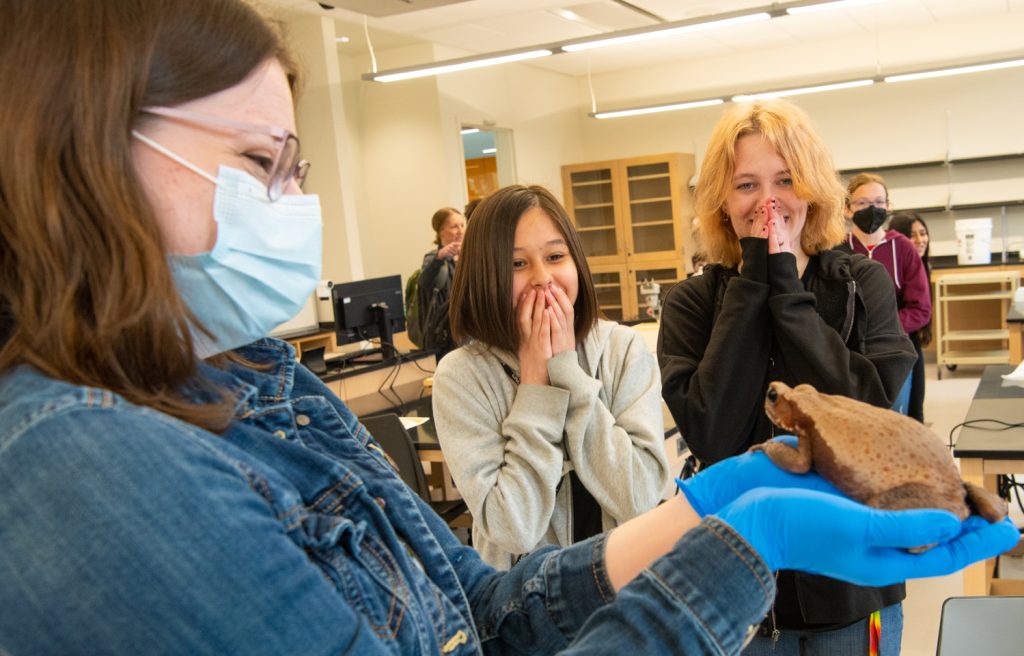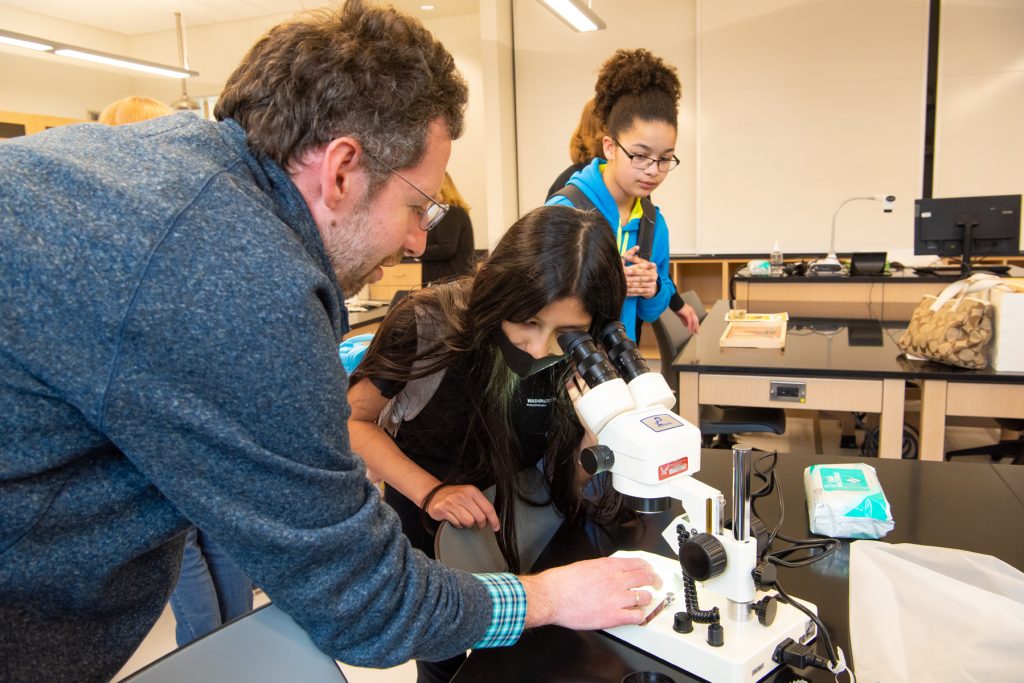During a recent visit to Eastern Washington University, area middle schoolers from underrepresented communities took turns feeding live roaches to a smooth-sided toad named Phil. They explored petri dishes of aquatic bugs, donned lab coats and used microscopy to diagnose a case of strep throat.
At the end of the day, enthusiasm was high for careers in the field of STEM.

“I really like exploring different things because it is fantastic to learn about our environment and ecosystem,” said Catherine, a 13-year-old Cheney Middle School student who is pondering a career in healthcare…or maybe art. “I’m not really 100 percent sure, but I’m thinking about things,” she added.
The May 20 field trip, in cooperation with Spokane MESA, featured projects involving microbiology, ecology and zoology. Led by faculty and graduate students, the activities engaged 35 students, grades 6-8, in science-related studies.

“The water bugs were my favorite and the frog eating the bugs was cool,” said Kandice, a 13-year-old from the Inchelium Middle School, located on the Eastern side of the Colville Indian Reservation. With an emerging interest in science, Kandice is starting to envision herself making a difference as a researcher. She says she hopes to focus on uncovering the anomalies behind brain tumors. “I’m kind of interested in neurobiology,” she said.
Washington’s MESA program supports students of color, girls of all ethnicities and students facing socio-economic challenges by preparing them for success in a four-year college program. With an emphasis on pathways to STEM professions, Washington MESA serves students in grades 6-12 in 20 different school districts and hundreds of students attending 12 community colleges throughout the state. EWU is among five universities and one laboratory that serve as sponsors.
“We know that getting kids on a college campus at a young age is a great way to get them thinking about going to college,” said Brenda VanSlyke, director for Spokane MESA.

VanSlyke, a Colville Tribal member who earned a psychology degree from Eastern in 1990 and has spent her career connecting underserved and at-risk students with opportunities, said that, in addition to women, many minority populations, among them Native Americans, are underrepresented in STEM fields.
Vaughn Fairbanks, who teaches math and science to sixth and seventh graders in Inchelium, said the field trip to Eastern had the right mix of activities for his students.
“This is the first time for most of them to be on a college campus,” said Fairbanks, adding that the ISC building is “gorgeous” and that the students are “impressed with this college in general.”

